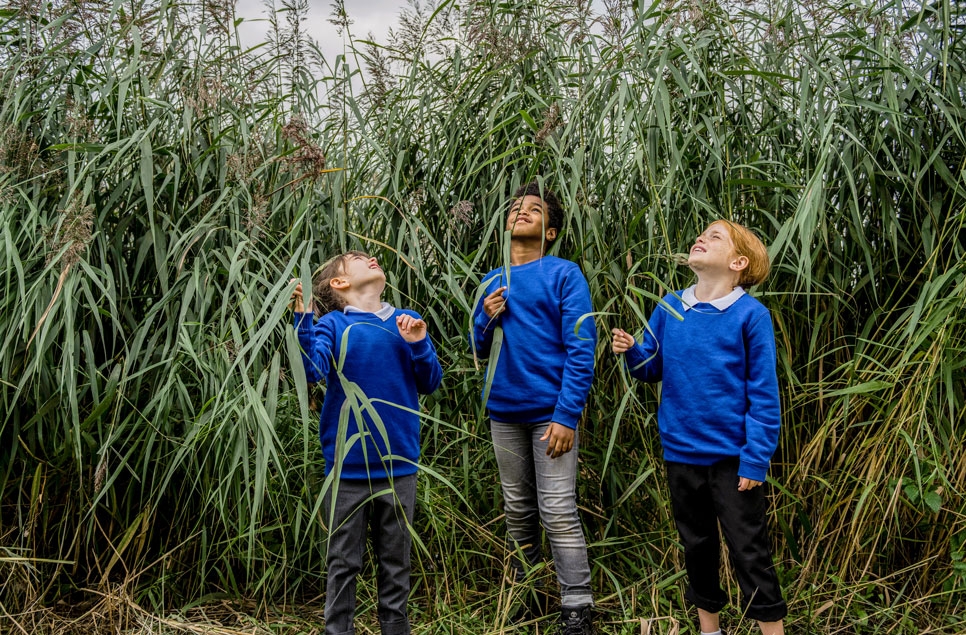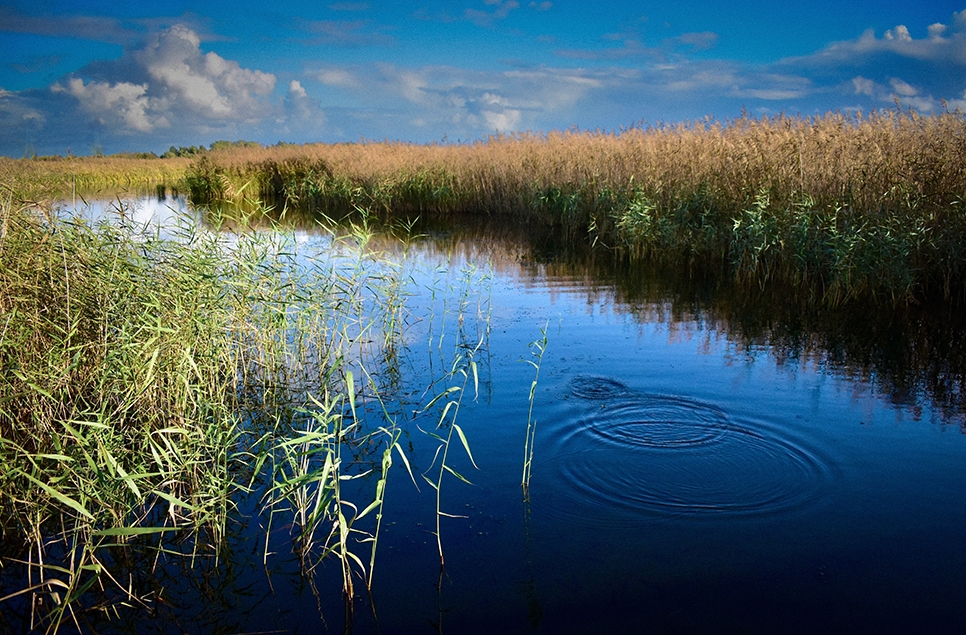Wetlands throughout the seasons: autumn
From breath-taking scenery to epic wildlife migrations, autumn is when nature chooses to wow us with its beauty and power before slowing down for a period of rest and regeneration. So what can we expect from this colourful, dramatic season?
It’s the time of year when nature pulls out all the stops. From breath-taking scenery to epic wildlife migrations, now is the time nature chooses to wow us with its beauty and power before slowing down for a period of rest and regeneration over the winter months. So what can we expect from this colourful, dramatic and abundant season?
Harvest moon

Nature heralds the start of autumn with the harvest moon - the first full moon to take place after the autumn equinox, which is usually late September. It’s called a harvest moon because at this time of year the moon is particularly bright and rises early. In the past, this allowed farmers to extend their working day and work by the light of the extra-bright moon, gathering crops to prepare for the winter months. The following moon in October is called the Hunter's Moon, as its largeness and light allowed our ancestors to hunt game during early autumn, before the November rains move in. Big, bright and often appearing redder than other moons, the harvest and hunter moons showcase the power of nature with breathtaking beauty.
Sunsets and sunrises
Is there anywhere more magical than a wetland at dawn or dusk? Waders picking over the mud, curlews calling and the light casting reflections of the changing landscape across the water. They are also the best places to see autumn sunrises and sunsets, which are often more spectacular at this time of year due to cloud cover, colder air and the tilt of the Earth. Any keen wildlife photographers out there? Now is the time to get out there and take those breath-taking shots.
From green to gold

During the autumn months plants are treating us to an explosion of colour from golds to yellow and reds to oranges. Our reed beds turn to beautiful shimmering gold that reflects in the gentle autumn sunlight.
Why do leaves turn red and gold?
Changes in the length of daylight and in temperature make leaves stop their food-making process. The chlorophyll breaks down, the green colour disappears and the leaves turn to their autumn colours, giving us a wonderful display.
Epic migrations

You’ll often hear them before you see them, the ‘honk honk’ of a skein of geese. Then you see them flying overheard in the tell-tale v-formation and you know autumn migration has begun. Every year thousands of geese, swans and wading birds arrive to spend the winter in the UK, many on WWT’s reserves. Brent geese and pink footed geese both travel around 6,000KM from their nesting sites in the arctic to spend their winter on UK wetlands where there is an abundance of food. At WWT Martin Mere we see around 40,000 pink footed geese arrive every year.
Find out more about who you might see arriving this autumn
Breath-taking murmurations
Watching a starling murmuration is like watching a finely orchestrated dance. As you watch, it’s hard to comprehend just how these birds achieve such an amazing feat of synchronicity and timing. It truly is one of the world’s most impressive wildlife spectacles. They perform these dances over their roosting sites at dusk, some flocks can number 100,000 birds. It’s thought they do it for safety in numbers, warmth on a cold night and to exchange information, such as good feeding areas.
Brilliant berries
Blackberries, hawthorns, rosehips and elderberries are just some of the colourful variations you might see drooping from hedgerows at this time of year. They might be delicious for us to eat but their true purpose is to sustain birds and animals through the winter months. Birds choose the order they eat berries in carefully, to make sure they have food available for as much of the winter as possible.
First, they eat the non-toxic berries with short shelf lives, like blackberries. Those with a longer shelf life, or with a mild toxicity, like ivy, are left untouched until other food sources run low. Even then berries with mild toxicity levels can only be consumed in low numbers in any one sitting. This makes sure there’s a supply of berries long into the winter.

Fabulous fungi

The humid, warm conditions of autumn are ideal for fungus growth. The mushroom we see above the ground is just one small part of the fungus, the rest is below the ground which is why mushrooms are literally able to spring up overnight. The part above ground releases spores for reproduction, while the fungus below ground concentrates on drawing nutrients and energy from organic matter using a series of long threads called the mycelium. In some fungi, the mycelium can stretch for several miles, making them the largest living organisms on earth. Fungi play an essential role in our ecosystem. They recycle waste and break down organic materials like leaves and wood into new nutrients, helping plants and trees to grow and thrive.
And what about the wetlands themselves?

Just like the wildlife around them, our wetlands transform during the autumn ready for the winter ahead. They look, feel and smell different at this time of year as there are large-scale changes occurring in their biological, physical and chemical components. The vegetation is no longer photosynthesising and the plants are either gone or heading into dormancy. However, the wetlands themselves are far from dormant at this time of year: full of wintering species and still providing an array of valuable ecosystem services. Flood control, packing down sediment to store carbon and water purification are still being performed at high levels by these seemingly sleeping systems, helping all living things get through the windy, wet winter.
Ready for an autumnal wetland escape?
Get closer to nature at one of our ten unique WWT Wetland Centres around the UK, designed with wildlife and people in mind.
Find your nearest wetland


